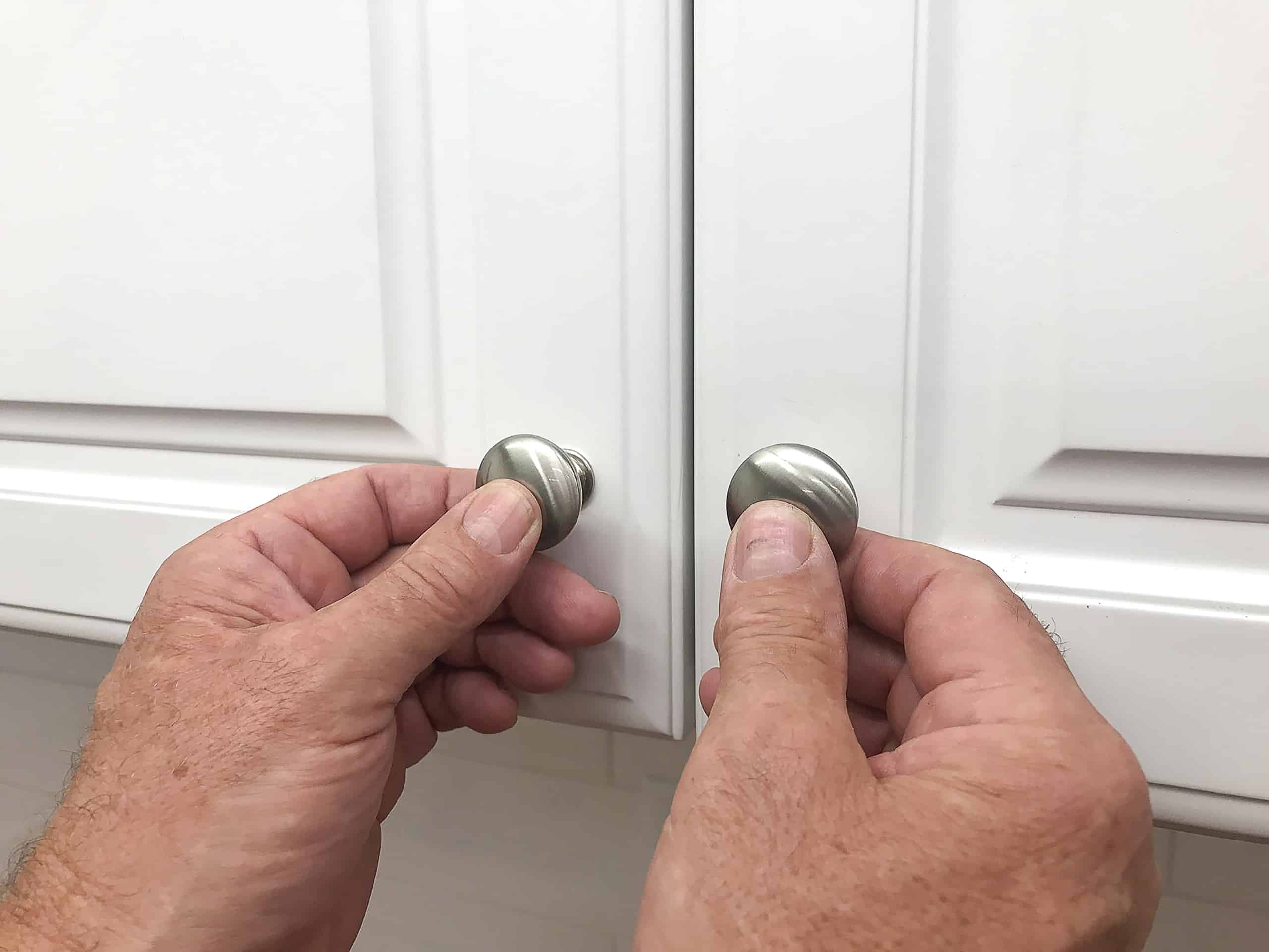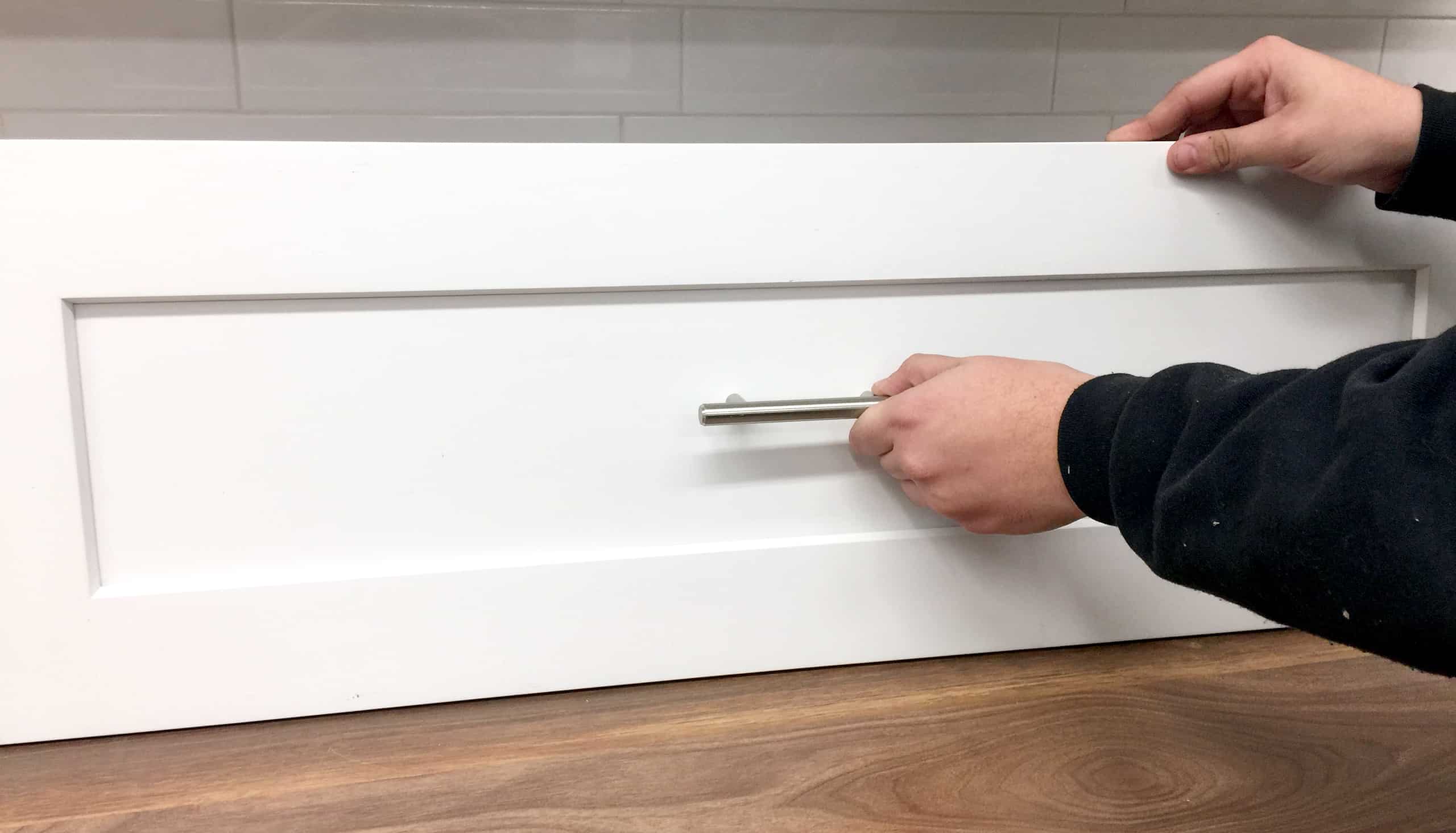Choosing the Right Hardware: How To Put On Kitchen Cabinet Hardware

Kitchen cabinet hardware is more than just functional; it’s a key element in defining your kitchen’s style and personality. Choosing the right hardware can transform your cabinets from ordinary to extraordinary. Let’s explore the world of cabinet hardware and discover the perfect match for your kitchen.
Types of Kitchen Cabinet Hardware
The type of hardware you choose will depend on your style, budget, and the overall design of your kitchen. Here are some common types of kitchen cabinet hardware:
- Knobs: These are small, round, or square pieces of hardware that are typically used on cabinet doors. Knobs come in a wide variety of styles, materials, and finishes. They are a popular choice for traditional kitchens, but they can also be used in modern kitchens, depending on the design.
- Pulls: These are longer pieces of hardware that are used on drawers and cabinet doors. Pulls come in a wide range of styles, from simple to ornate. They are a popular choice for modern kitchens, but they can also be used in traditional kitchens.
- Hinges: These are the metal pieces that connect cabinet doors to the cabinet frame. Hinges come in a variety of styles and finishes, and they are often chosen to match the cabinet hardware.
Hardware Styles and Materials
Cabinet hardware is available in a wide range of styles and materials, allowing you to create a look that reflects your personal taste. Here are some popular options:
- Brushed Nickel: This is a popular choice for modern kitchens, as it offers a sleek and contemporary look. Brushed nickel hardware can be paired with a variety of cabinet finishes, including white, gray, and wood.
- Oil-Rubbed Bronze: This is a popular choice for traditional kitchens, as it offers a warm and inviting look. Oil-rubbed bronze hardware can be paired with a variety of cabinet finishes, including dark wood and painted cabinets.
- Modern: Modern cabinet hardware is typically characterized by clean lines, geometric shapes, and minimalist designs. Popular materials for modern hardware include stainless steel, chrome, and black.
- Traditional: Traditional cabinet hardware is typically characterized by ornate designs, intricate details, and classic finishes. Popular materials for traditional hardware include brass, bronze, and pewter.
Factors to Consider When Choosing Hardware
When choosing cabinet hardware, it’s important to consider the following factors:
- Cabinet Style: The style of your cabinets will influence the style of hardware you choose. For example, modern cabinets will look best with modern hardware, while traditional cabinets will look best with traditional hardware.
- Room Decor: The overall decor of your kitchen will also influence your hardware choice. For example, if your kitchen has a farmhouse style, you might choose hardware with a rustic look. If your kitchen has a contemporary style, you might choose hardware with a sleek and minimalist look.
- Personal Preference: Ultimately, the most important factor to consider is your own personal preference. Choose hardware that you love and that will make your kitchen feel like home.
Measuring for Hardware
- Knobs: For knobs, measure the distance between the center of the knob and the edge of the cabinet door. This measurement will determine the size of the knob you need.
- Pulls: For pulls, measure the distance between the centers of the two holes that will be used to attach the pull to the cabinet door. This measurement will determine the length of the pull you need.
- Hinges: For hinges, measure the distance between the hinge plate and the edge of the cabinet door. This measurement will determine the size of the hinge you need.
Determining the Appropriate Size and Placement
- Knobs: Knobs should be placed in the center of the cabinet door, about 2 1/2 inches from the top or bottom edge. If your cabinet door is smaller, you can place the knob closer to the center.
- Pulls: Pulls should be placed about 3 inches from the top or bottom edge of the cabinet door. The center of the pull should be aligned with the center of the cabinet door. For larger cabinet doors, you may want to use a longer pull.
- Hinges: Hinges should be placed at the top and bottom of the cabinet door, about 2 inches from the edge of the cabinet door. Hinges should be evenly spaced, and they should be aligned with the hinges on the other cabinet doors.
Installing Cabinet Hardware

Installing cabinet hardware is a relatively simple task that can significantly enhance the look and functionality of your kitchen. Whether you’re replacing old hardware or adding new features, understanding the process and having the right tools will ensure a smooth and successful installation.
Installing Cabinet Knobs and Pulls, How to put on kitchen cabinet hardware
Cabinet knobs and pulls are the most common types of hardware. They come in various styles and materials, offering a wide range of options to complement your kitchen’s design. Installing these pieces requires a few basic tools and a straightforward process.
The tools you’ll need for installing knobs and pulls include:
- A pencil
- A measuring tape
- A drill with a drill bit that matches the size of your screws
- A screwdriver
Here’s a step-by-step guide for installing cabinet knobs and pulls:
- Determine the placement. Decide where you want to place your knobs and pulls. Consider the size of the cabinet doors and drawers and the overall aesthetic you’re aiming for. Ensure the placement is symmetrical and visually appealing.
- Mark the installation points. Use a pencil to mark the exact location of each knob or pull on the cabinet doors and drawers. For knobs, mark the center point. For pulls, mark the two points where the screws will go.
- Drill pilot holes. Drill pilot holes at the marked points using a drill bit slightly smaller than the diameter of your screws. This will prevent the wood from splitting when you screw in the hardware.
- Attach the hardware. Align the knob or pull with the marked point and secure it using the provided screws. Ensure the hardware is level and straight.
- Tighten the screws. Tighten the screws firmly but avoid overtightening, which can damage the wood or hardware.
Installing Hinges
Hinges are crucial for attaching cabinet doors to the cabinet frames. They come in various types, including surface-mounted, inset, and concealed hinges. Installing hinges requires careful alignment and precision to ensure the doors open and close smoothly.
The tools you’ll need for installing hinges include:
- A pencil
- A measuring tape
- A drill with a drill bit that matches the size of your screws
- A screwdriver
- A level
Here’s a step-by-step guide for installing hinges:
- Determine the hinge placement. Decide on the location of the hinges on the cabinet doors and frames. The hinge placement will depend on the type of hinge you’re using and the size of the cabinet doors.
- Mark the installation points. Use a pencil to mark the exact locations of the hinges on the cabinet doors and frames. Ensure the marks are accurate and aligned. For surface-mounted hinges, mark the location of the base plate. For inset hinges, mark the location of the hinge cup.
- Drill pilot holes. Drill pilot holes at the marked points on the cabinet doors and frames. Use a drill bit slightly smaller than the diameter of your screws. This will prevent the wood from splitting when you screw in the hinges.
- Attach the hinges. Align the hinges with the marked points and secure them using the provided screws. Ensure the hinges are level and straight. For surface-mounted hinges, screw in the base plate. For inset hinges, install the hinge cup into the cabinet door.
- Adjust the hinges. Once the hinges are installed, adjust them to ensure the cabinet doors open and close smoothly and align properly with the cabinet frames. You can adjust the hinges by loosening the screws and moving the hinge slightly. Tighten the screws once you’ve achieved the desired alignment.
Troubleshooting and Tips

Even the most experienced DIYer can encounter challenges while installing kitchen cabinet hardware. This section covers common problems, their solutions, and tips for preventing issues and maintaining your hardware.
Troubleshooting Common Issues
Knowing how to troubleshoot common problems can save you time and frustration. Here’s a list of common issues and their solutions:
- Misaligned Holes: If your holes don’t line up perfectly, it’s crucial to address the issue before proceeding. You can use a drill bit slightly larger than the screw to create a pilot hole in the cabinet door, which can help align the screw. If the issue persists, you can try using a countersinking bit to create a slightly recessed hole for the screw head.
- Loose Screws: Loose screws are a common problem, especially when using lightweight hardware. You can tighten the screws with a screwdriver or use a drill with a screw-driving attachment. If the screw keeps loosening, consider using a longer screw or applying a thread locker to the screw threads.
- Damaged Hardware: If the hardware is damaged, you can try replacing the damaged part. If the damage is extensive, you might need to replace the entire hardware set.
How to put on kitchen cabinet hardware – Installing kitchen cabinet hardware can be a simple task, but it’s important to remember that if you’re working on a HUD-funded property, there are specific requirements for cabinet materials and construction. You can find a detailed guide on HUD kitchen cabinet requirements to ensure compliance.
Once you’ve confirmed your hardware is suitable, the installation process is fairly straightforward, involving precise drilling and secure fastening.
Installing kitchen cabinet hardware can be surprisingly satisfying, a small act of transformation that adds a touch of personality to your space. Think of it as a miniature version of designing a whole room, like choosing a stunning modern crystal chandelier bedroom , where each element contributes to the overall aesthetic.
The same careful consideration should be given to the hardware, ensuring it complements the cabinets’ style and your kitchen’s personality.
